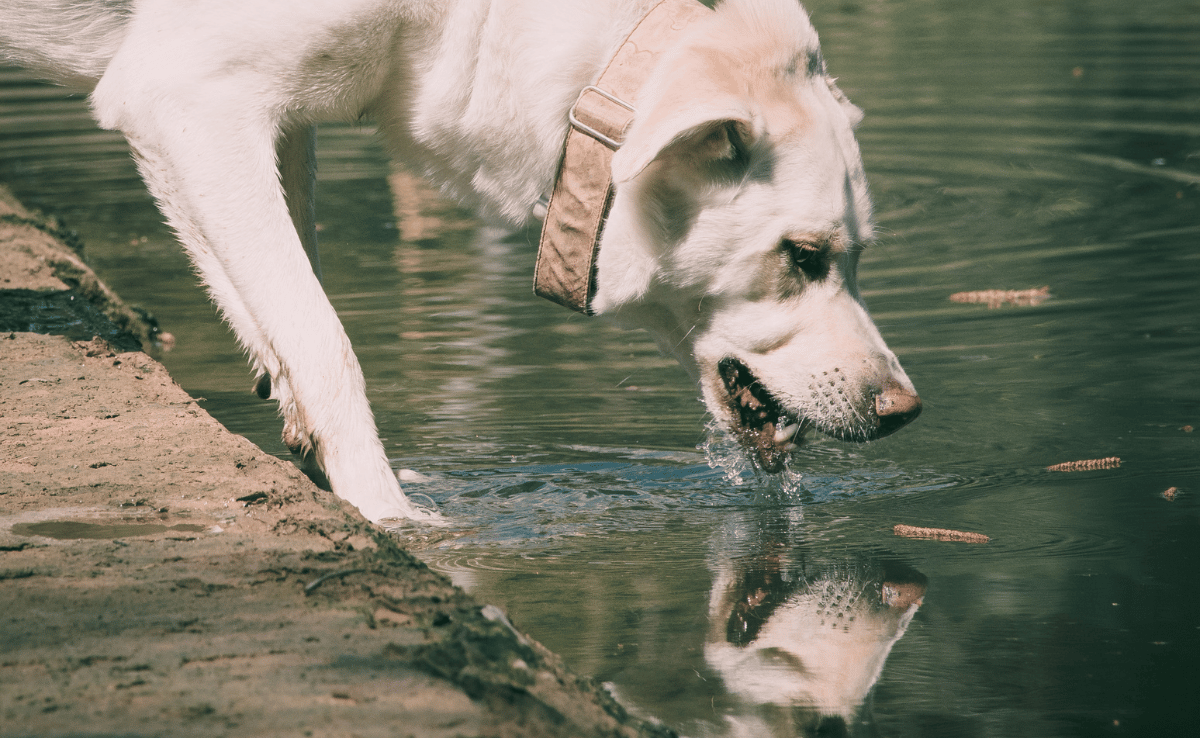Ozempic For Dogs? The Truth Behind The Trend
When you purchase through links on our site, we may earn a commission. Here’s how it works.
Dogs come in all shapes and sizes, from the sleek greyhound to the adorably rotund bulldog. But when your pooch starts looking more like a furry ottoman than a frisbee-chaser, it might raise a tough question: Is it time for a weight-loss plan?
Table of Contents
Enter Ozempic, the viral diabetes drug-turned-celebrity weight-loss trend. It’s filling human headlines and TikToks alike. And now, some dog owners are asking: Could this work for my pet, too?
Ozempic For Dogs: Is This Trendy Drug Safe For Pets?
You’ve seen the headlines. Ozempic, a diabetes medication for humans, is the hot new weight loss trend.
But as people start shedding pounds with semaglutide, some pet owners are wondering if their dogs could benefit, too. Here’s what you need to know before you even think about letting your pup join the Ozempic revolution.
What Is Ozempic, Anyway?
Ozempic is the brand name for semaglutide, a drug developed to treat Type 2 diabetes in humans. It works by mimicking a hormone called glucagon-like peptide-1 (GLP-1), which helps regulate blood sugar and slow digestion.
The result? You feel full longer and eat fewer calories—hence the sudden popularity as a weight-loss aid, even among people without diabetes.
So… Can I Give Ozempic To My Dog?
Not safely. Ozempic isn’t approved for pets, and its effects in dogs are largely unknown.

Ozempic’s active ingredient, semaglutide, hasn’t been properly studied in canines. While a few similar drugs in the GLP-1 receptor agonist family have been tested in dogs with diabetes, Ozempic itself hasn’t. That means we don’t know how it affects dogs, or whether it’s safe at all.
But What If It Might Help? Isn’t It Worth Trying?
Still no. Veterinarians don’t prescribe Ozempic for pets. In fact, using it off-label in dogs could be dangerous.
Dogs metabolize medications differently than humans, and what works for us can cause serious side effects in them, including vomiting, diarrhea, dehydration, or worse.
Are There Safer Options Out There?
Absolutely. There are proven, vet-approved treatments for canine diabetes and obesity—ones that are actually formulated for dogs.

It is never safe to give a dog Ozempic or any other prescription diabetes drug without veterinary supervision, especially as a shortcut to avoid insulin injections.
According to VCA Animal Hospitals, most dogs with diabetes have Type 1, or “insulin-dependent,” diabetes, making insulin therapy essential. Alternative treatments like Ozempic are not suitable substitutes.
The Bottom Line?
Ozempic is also expensive, hard to access (thanks to ongoing shortages), and definitely not worth the risk for your pup’s health.
If your dog needs help managing weight or blood sugar, talk to your vet. Don’t try to DIY it with a trendy human medication.
Ozempic might be the drug of the moment for celebrities, but your dog deserves something safer, smarter, and designed just for them.
What If My Dog Accidentally Ingests Ozempic?
Accidents happen. Maybe your well-meaning pet sitter mistook Ozempic for your canine’s insulin injection. Or maybe your curious pup is exceptionally skilled at finding and chewing items in the home.
Whatever the cause, if your pup got hold of Ozempic—even a little—you need to act fast.
If your dog is accidentally administered Ozempic, here’s what to do:
- Call your vet immediately: Don’t wait to “see what happens.” Your vet will need to know how much was ingested, how long ago, and your dog’s weight to assess the risk.
- Watch for symptoms: Keep a close eye out for vomiting, diarrhea, weakness, drooling, or loss of appetite. These are common signs of gastrointestinal distress linked to GLP-1 drugs like Ozempic.
- Skip the home remedies: No hydrogen peroxide, no activated charcoal, no DIY fixes. Also, do not attempt to induce vomiting. Trying to treat your dog at home could make things worse.
- Go to an emergency clinic if advised: If your vet suspects a toxic dose or your dog is symptomatic, head to the ER. In some cases, supportive care (like fluids or anti-nausea medication) is needed.
Ozempic Is Not Pet-Safe
- Even small doses can cause serious side effects in dogs
- Always keep human medications out of reach
- Contact your vet or pet poison control ASAP if exposure occurs
What Are The Side Effects Of Ozempic In Dogs?
Since Ozempic hasn’t been studied in dogs, we’re operating in a gray area. But based on what it does in humans—and what little we know from similar drugs—here’s what might happen if your dog gets a dose, intentionally or not.
Potential Side Effects Of Ozempic In Dogs
- Vomiting or nausua. GLP-1 drugs slow digestion, which can make dogs feel sick—fast.
- Diarrhea or constipation. It goes one way or the other, and neither is great for your rug.
- Lethargy. If your pup seems unusually tired or listless, that’s a red flag.
- Loss of appetite or extreme hunger. Some dogs may skip meals. Others might raid the trash. Either one is a problem.
- Dehydration. Especially if vomiting or diarrhea sets in, fluid loss can become serious quickly.
Known Human Risks That Could Affect Dogs, Too
Ozempic and similar drugs are associated with certain risks in humans.
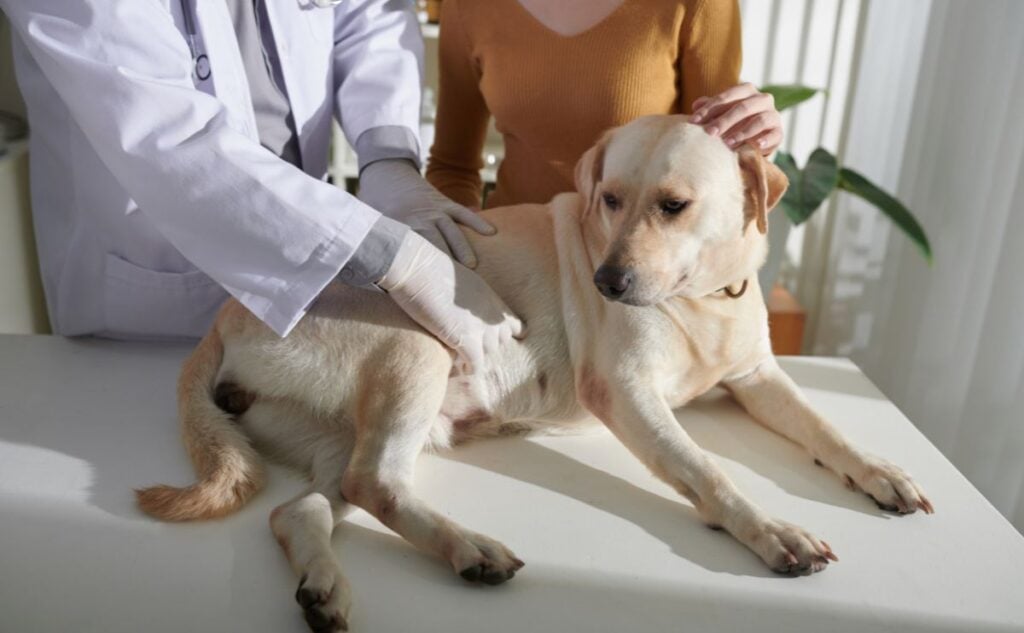
- Pancreatitis: In people, Ozempic use can cause painful inflammation of the pancreas. We don’t know if dogs are susceptible, but it’s not a risk worth taking.
- Thyroid tumors: Ozempic has shown a link to thyroid cancer in animal studies (rats) and carries a black box warning for humans. There’s currently no canine data.
- Disrupted blood sugar regulation: For dogs with diabetes or underlying endocrine issues, semaglutide could throw their system into chaos. The effects are uncharted.
The bottom line? Keep Ozempic far out of your pup’s reach.
Ozempic Isn’t For Diabetic Dogs—Here’s What Actually Works
Canine diabetes is a real and serious condition, but Ozempic isn’t the answer.
Most dogs with diabetes can’t regulate their blood sugar properly, usually because their pancreas doesn’t produce enough insulin. (This is called insulin-dependent, or Type 1 diabetes.)
It’s most common in older dogs and certain breeds like Dachshunds and Yorkies.
Symptoms Of Canine Diabetes
- Excessive thirst
- Frequent urination
- Unexplained weight loss
- Lethargy or decreased energy
- Always hungry but still losing weight
Treatment: Why Dogs Need Insulin—Not Ozempic
Unlike Ozempic, which mimics a hormone to regulate blood sugar in people, insulin replaces the hormone dogs aren’t producing. It’s the gold standard for treating canine diabetes.

Here’s what managing diabetes typically looks like:
- Daily Injections: Most dogs need one or two insulin shots per day. Your vet can teach you how to give them safely.
- Dietary Changes: A consistent meal schedule and low-carb diet help stabilize blood sugar.
- Monitoring: Regular glucose checks—either at home or at the vet—are key to long-term health.
A Quick Note On Cost & Insurance
Managing diabetes in dogs can be expensive over time, especially with daily insulin needs and follow-up vet visits.
Pet insurance may help, but only if your dog isn’t already diagnosed—most providers won’t cover pre-existing conditions. If your pup is still healthy, now’s the time to explore coverage.
View our pet insurance reviews to find the best policy.
The Good News
With the right treatment plan, many diabetic dogs live long, happy, active lives. It’s a commitment but it’s not a deal-breaker for quality of life.
My Golden Retriever Was Obese—Here’s What Actually Helped
When I adopted my three-year-old Golden Retriever, Rio, he tipped the scales at 133 pounds. (For reference, the average weight range of his breed is 55 to 75 pounds.)

His gait was more waddle than walk. He couldn’t jump, and he’d get winded five minutes into a stroll. His elbows were covered in thick calluses from lying down so much—common in overweight dogs, but still heartbreaking to see.
There was no underlying health condition to blame. Rio wasn’t sick. He was just overfed and under exercised.
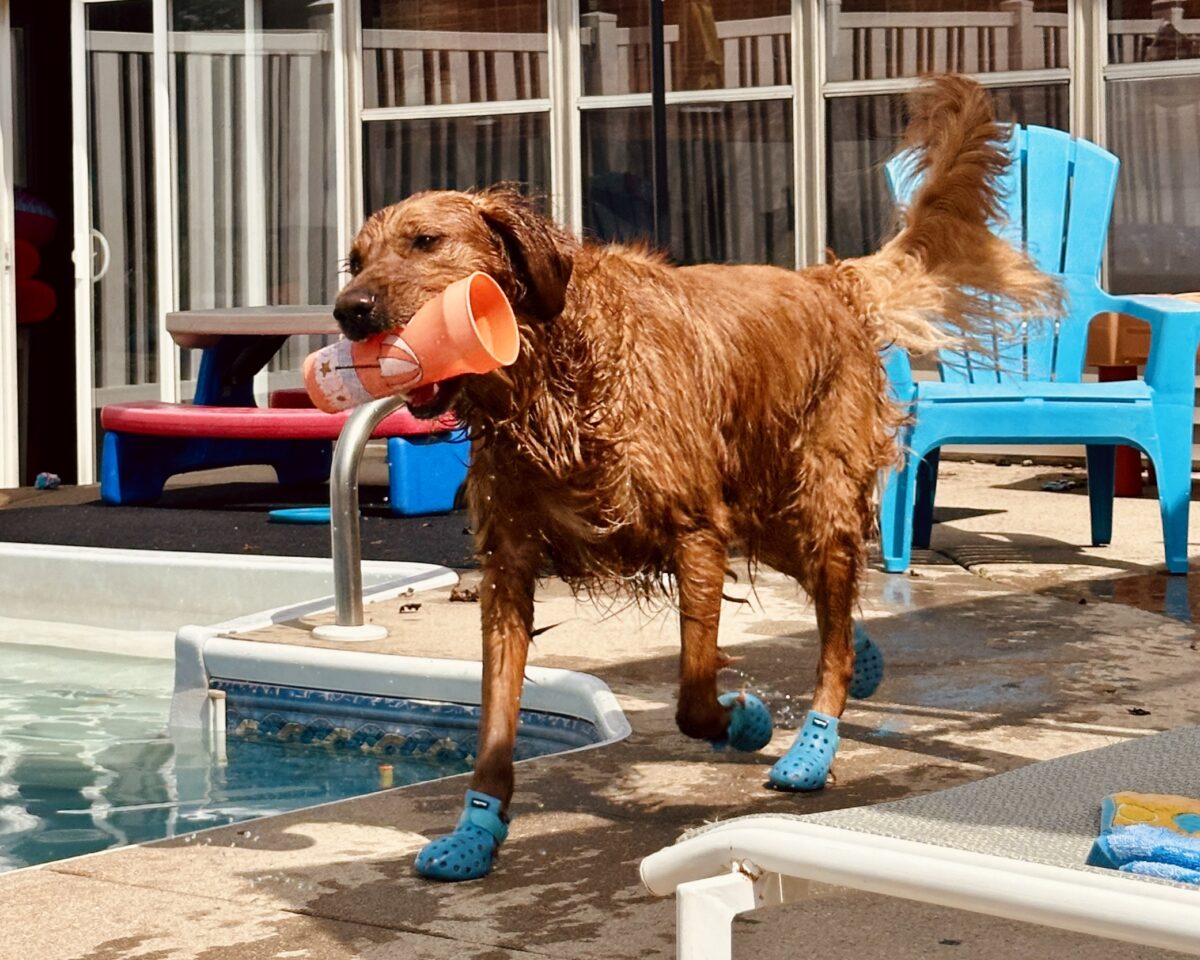
So instead of Ozempic, he got what he really needed: a structured weight-loss plan.
We overhauled his diet, measured every portion, cut back on treats, and slowly built up his exercise tolerance. Within three months, Rio had dropped 22 pounds.
The calluses disappeared. The fur grew back. And the pep? Fully restored.
Read more about Rio’s weight loss transformation.
Solutions For Canine Obesity
According to a 2022 survey from the Association for Pet Obesity Prevention, 59% of canines in the U.S. are overweight or obese.

Obesity is almost always caused by a combination of poor diet (high in calories and simple carbohydrates) and inactivity; however, there can also be other factors at work.
Root causes of obesity in canines include:
- Genetics
- Hormone imbalance
- Inactivity
- Mood disorders (e.g., anxiety and depression)
- Preexisting medical conditions (e.g., hypothyroidism)
- Poor diet
- Side effects of pharmaceutical medication
- Sterilization
- Toxins
6 Alternatives To Ozempic For Weight Loss In Dogs
Quick fixes like Ozempic might sound tempting, but your dog’s weight-loss plan doesn’t need a celebrity endorsement. These proven, vet-approved solutions are safer, more sustainable, and actually designed for canines.
1. Prescription Diets
Specialized weight-loss dog foods, such as those offered by Hill’s, Purina, or Royal Canin, to help your dog shed pounds without sacrificing nutrition. These diets focus on reducing caloric intake while maintaining essential nutrients to support your dog’s overall health.

Unlike standard dog food, these formulas typically feature:
- Lower calorie content: Your dog can enjoy satisfying portions without overeating by reducing caloric density.
- High fiber: Increased fiber helps promote a feeling of fullness, reducing your pet’s urge to beg for extra snacks.
- Optimal nutrition: These diets ensure your dog receives all necessary vitamins and minerals, even with reduced calorie intake.
Always transition gradually and work with your vet to choose the right formula.
Prefer non-prescription? Look for high-protein, high-fiber foods with no added hormones or antibiotics. Antibiotics and grown hormones used in raising livestock have been linked to various health concerns, including weight gain and obesity.
If you need help getting started, check out our top picks for the best dog food for weight loss.
2. Caloric Control
Controlling your dog’s caloric intake is one of the simplest yet most effective ways to manage weight. Most dogs eat more than they need, especially if you eyeball it.
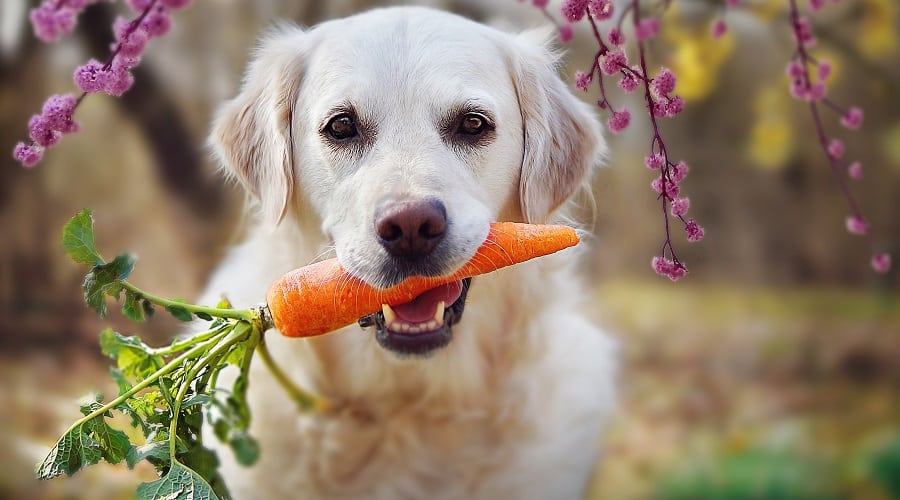
Start by measuring food portions accurately using a kitchen scale or measuring cups. Feeding guidelines on commercial dog food packages are often generalized, so consult your veterinarian for a more tailored plan.
- Healthy treats: Swap calorie-dense treats for more nutritious options like small pieces of carrot, cucumber, or apple (ensure seeds and cores are removed).
- Scheduled feeding: Avoid free feeding, where food is left out all day, as it encourages overeating. Stick to set meal times instead.
- Avoid table scraps: Human food is often high in fat and calories, making it an easy culprit for weight gain in dogs.
Consistency and moderation are essential. Sudden, drastic reductions in food can lead to nutrient deficiencies or behavioral issues, so work with your vet to strike the right balance.
3. Increased Exercise: Walk, Play, Repeat
Your dog doesn’t need a CrossFit coach, but they do need regular movement. Regular physical activity helps burn calories, strengthens muscles, improves cardiovascular health, and boosts mental well-being.

Incorporating exercise into your dog’s routine can take many forms:
- Daily walks: Start with short walks and gradually increase the duration and intensity as your dog builds stamina.
- Interactive play: Engage your pet with fetch, tug-of-war, or responsive toys that encourage movement and mental stimulation.
- Swimming: For dogs that enjoy water, swimming provides a low-impact way to burn calories, making it ideal for older dogs or those with joint issues.
Consistency is key when introducing exercise to your dog’s lifestyle. Monitor their progress and consult your vet if you’re unsure how much activity is appropriate for your pet’s age, breed, or health condition.
4. Supplements: Support Behind The Scenes
Supplements won’t do the heavy lifting, but they can make the journey smoother. Certain supplements may promote fat metabolism, improve joint health, or support digestion, all of which can aid in weight management.
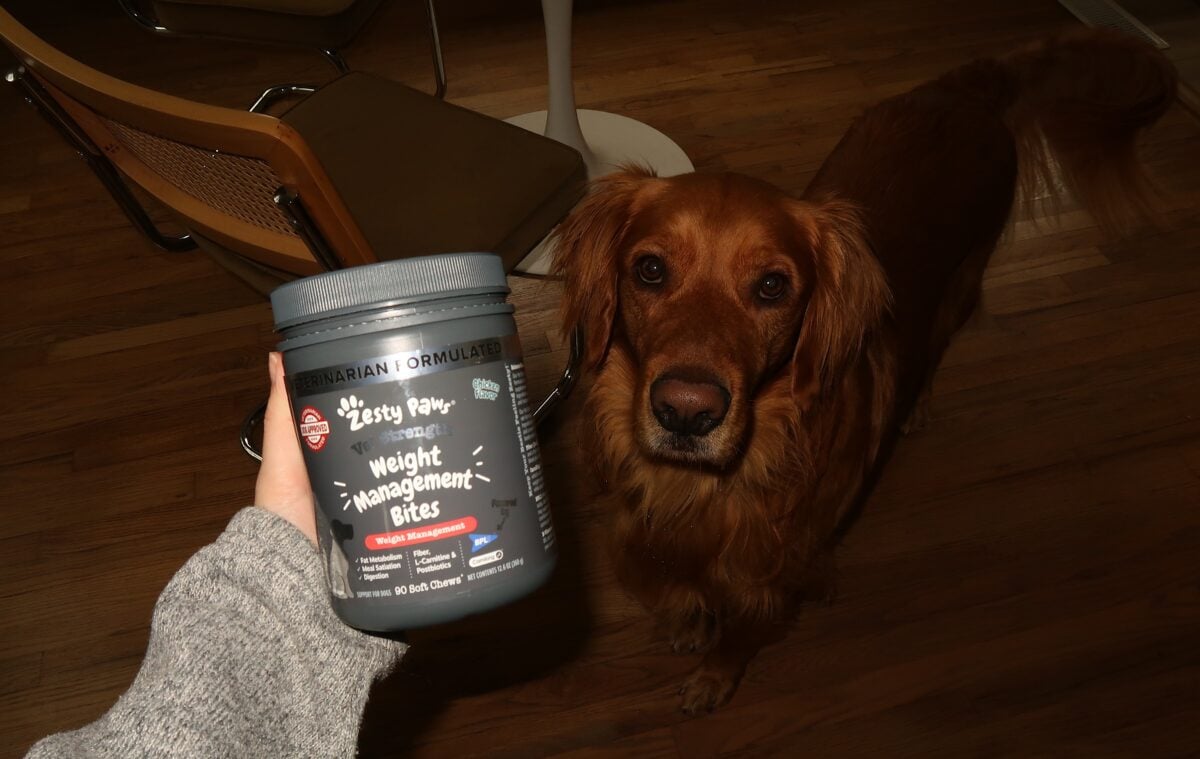
Popular options include:
- Omega-3 fatty acids: Found in fish oil, omega-3s are healthy fats that will help your pup feel satisfied after a meal. Omega-3s can reduce inflammation and support joint health, making it easier for overweight dogs to move comfortably.
- Probiotics: A healthy gut microbiome can influence metabolism and digestion, which is especially beneficial for dogs on a weight-loss plan.
- L-Carnitine: This amino acid supports fat metabolism and can be a helpful addition to a veterinary-supervised weight-loss program.
- Calcarea carbonica: A homeopathic remedy for treating obesity, especially if due to a hormonal imbalance.
Always consult your veterinarian before introducing supplements to ensure they are safe and beneficial for your dog’s needs.
5. Weight-Loss Medications: A Vet’s Last Resort
In severe cases of canine obesity, your veterinarian may recommend the FDA-approved weight-loss medication dirlotapide, marketed under the brand name Slentrol.

This medication works by reducing appetite and decreasing fat absorption, helping dogs lose weight effectively under veterinary supervision.
Key points about Slentrol include:
- Mechanism of action: Slentrol alters how fat is absorbed and processed, reducing the number of calories retained from food.
- Strict supervision: Regular check-ups are necessary to monitor progress and adjust dosages as needed.
- Potential side effects: Some dogs may experience vomiting, diarrhea, or changes in appetite, so close monitoring is essential.
Weight-loss medications are typically prescribed only when other interventions, such as diet and exercise, have proven insufficient. They are not a substitute for a comprehensive weight-management plan but can be a valuable tool in certain situations.
6. Medical Screening: Rule Out Hidden Causes
Some dogs gain weight because of underlying health conditions, not just overeating.
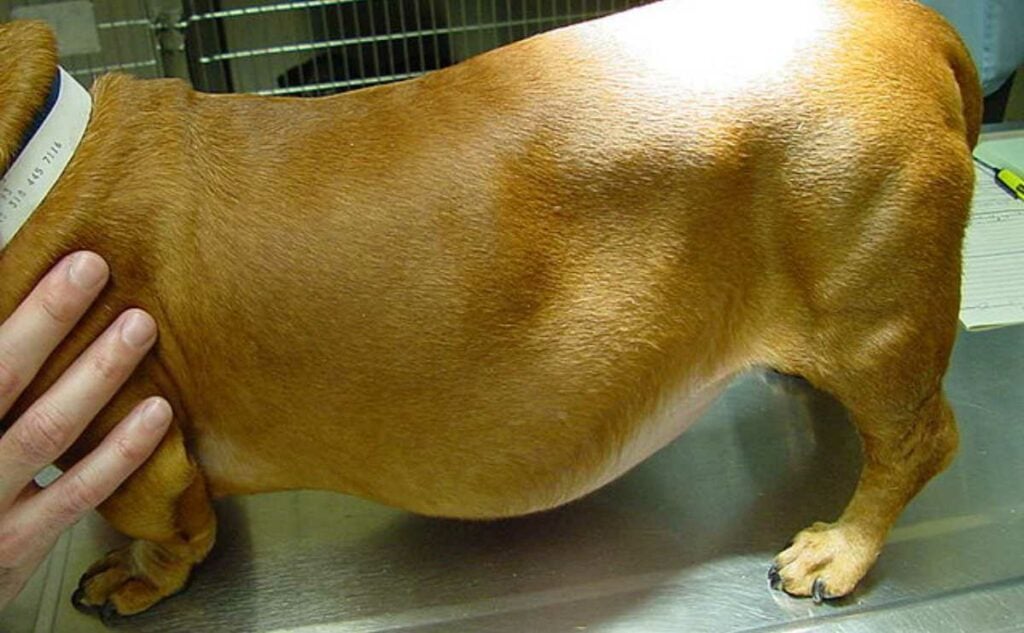
- Hypothyroidism: This condition slows metabolism and can cause lethargy and weight gain. Treatment typically involves daily thyroid hormone replacement therapy.
- Cushing’s Disease: Caused by an overproduction of cortisol, this condition can lead to increased appetite, weight gain, and other symptoms. Depending on the cause, treatment options include medication or surgery.
If your dog struggles to lose weight despite a proper diet and exercise, consult your veterinarian for a thorough evaluation.
Weight loss isn’t about perfection, it’s about consistency. Talk to your vet, start small, and celebrate every win (including that first loose collar notch). You’ve got this—and so does your dog.
Does My Dog Need To Lose Weight?
Not sure if your furry friend is carrying a little extra baggage? Maintaining a healthy weight is crucial for your dog’s overall well-being, as obesity can lead to serious health issues such as joint problems, diabetes, heart disease, and more.

By assessing your dog’s body condition, you can take proactive steps to prevent these complications and ensure they live a long, healthy life.
Rib Check
The rib check is one of the simplest ways to evaluate your dog’s weight.
Gently place your hands on their sides, running your fingers over the rib area. Ideally, you should be able to feel their ribs easily through a thin layer of fat, but they shouldn’t be overly pronounced or jutting out.
If you must press firmly to locate the ribs, your dog is likely carrying excess fat. Ribs that are difficult to feel suggest that your dog’s caloric intake may exceed their energy expenditure.
Adjusting your dog’s diet and exercise routine can help improve their body composition.
Waistline
Stand above your dog and look down at their body shape.
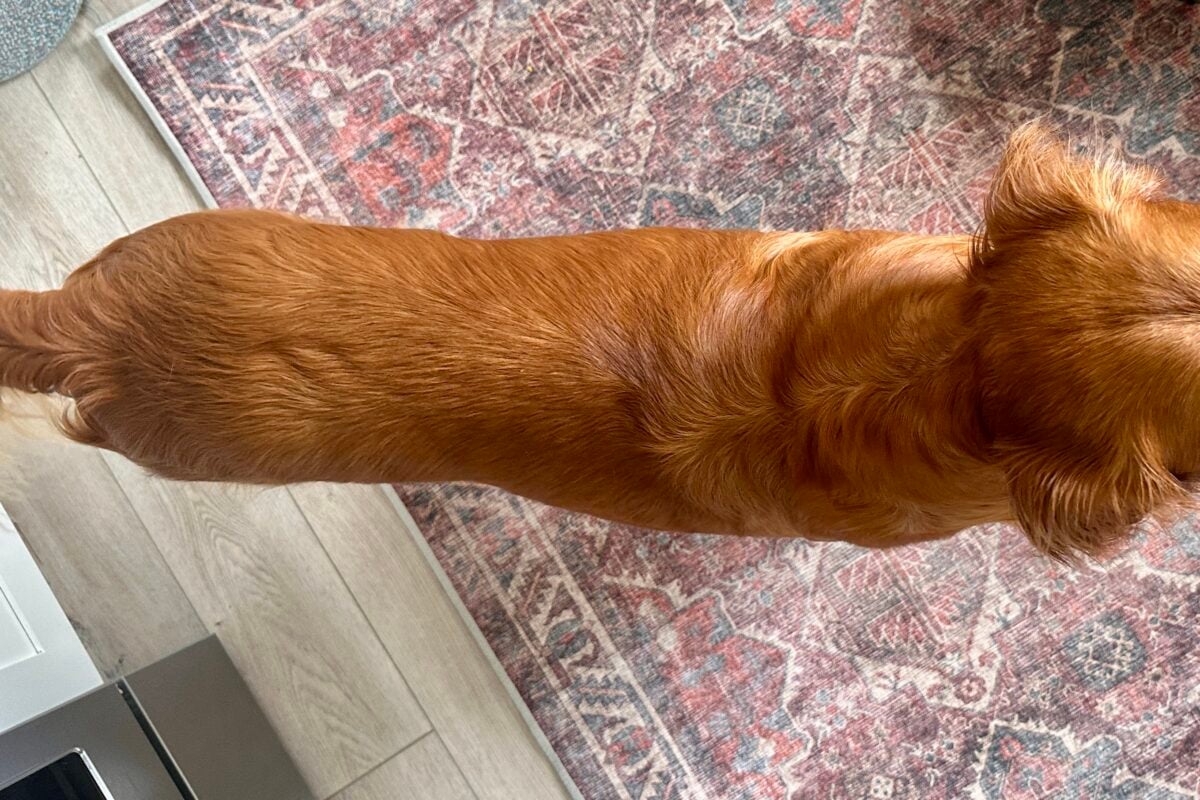
A healthy dog should have a noticeable waist that narrows just behind the ribcage. If your dog’s body shape resembles a cylinder or sausage, with no visible tapering, they may be overweight.
Maintaining a healthy waistline helps reduce fatigue and supports better energy balance throughout the day.
Abdominal Tuck
Now check their profile from the side.

A fit dog will have an abdominal tuck—meaning their belly slopes upward from the ribcage toward the hips.
This upward curve is a key sign of a lean body condition.
Energy Levels
Pay attention to how your dog moves and plays.

Overweight dogs often struggle during walks, tire quickly, or seem unmotivated to play. If your dog’s stamina has dipped or they seem sluggish, extra weight could be the cause.
Reduced activity can create a vicious cycle, where weight gain further limits mobility.
Encouraging regular, low-impact exercise like swimming or short walks can help improve your dog’s overall fitness while supporting stable energy levels.
Other Warning Signs
Here are more subtle signs your dog might be overweight:
- Labored breathing during rest or light activity
- Difficulty jumping onto furniture or into the car
- General reluctance to move or play
Also look for changes in their skin—like hair loss or thickened patches—which can be early signs of pressure sores. These often form when extra weight forces dogs to lie down more, putting excess pressure on certain areas.
Give your dog a padded bed or orthopedic surface to rest on as you help them slim down safely.
Consulting Your Veterinarian
If you’re not sure about your dog’s weight, talk to your vet.
They can determine your dog’s ideal weight based on their breed, age, and body size, and help detect related issues like joint strain or metabolic concerns.
Your vet may recommend gradual changes like:
- A lower-calorie diet
- More consistent activity
- Food puzzles to slow eating
- Special bedding to relieve joint pressure
Tracking your dog’s progress with professional support ensures weight loss is safe, comfortable, and effective.
Frequently Asked Questions
Curious about whether Ozempic could help your dog drop a few pounds? You’re not alone.
Below are the most common questions pet owners ask. Don’t see yours? Ask us in the comments!
Can Dogs Take Ozempic for Weight Loss?
No. Ozempic (semaglutide) is not approved or tested for use in dogs. It may cause serious side effects and should never be given without veterinary supervision.
Is There A Version of Ozempic Made For Dogs?
Not currently. No veterinary semaglutide medications are approved for dogs.
Some pet-safe weight-loss options exist, but Ozempic isn’t one of them.
What Happens If A Dog Accidentally Gets Ozempic?
Call your veterinarian right away. Symptoms may include vomiting, diarrhea, lethargy, or dehydration.
Emergency treatment may be needed depending on the amount and your dog’s size.
Can Ozempic Be Used To Treat Diabetes In Dogs?
No. Most dogs with diabetes require insulin, not GLP-1 drugs like Ozempic. Giving Ozempic to a diabetic dog can be dangerous.
Are There Any Weight-Loss Medications Approved For Dogs?
Yes. Slentrol (dirlotapide) is FDA-approved for canine weight loss in severe cases. It reduces fat absorption and appetite, but must be used under veterinary supervision.
How Can I Tell If My Dog Needs To Lose Weight?
Use the rib check, waistline view, and abdominal tuck test. If your dog has no waist, tires easily, or struggles to move, they may be overweight.
What’s The Safest Way To Help My Dog Lose Weight?
Partner with your vet to build a customized plan. This typically involves portion control, regular exercise, a balanced diet, and gradual, consistent progress.
More Tips To Get Your Dog In Shape
Do you know how heavy your dog should be? If Fido is above his recommended weight or body condition score (BCS), he may be at risk of obesity and a host of correlated health issues. Check out our article on how to help your dog lose weight for more tips on how to shed those pesky pounds.

